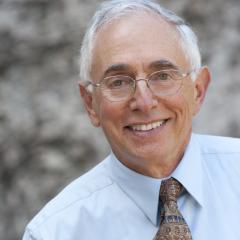'Hothouse Earth': A climate tipping point
Editor's note: The following opinion piece by Fellow John J. Berger first appeared in The Seattle Times.
Hot, dry conditions linked to climate change parched California this summer, setting the stage for 17 simultaneous blazes that consumed more than 800,000 acres. The state’s largest inferno ever, the Mendocino Complex fire, alone burned more than 460,000 acres and is still not fully contained.
These fires not only reflect an acceleration in climate change. They are also incinerating ecosystems that once removed and stored carbon from the atmosphere. As they burn, forests and grasslands return stored carbon to the atmosphere by the millions of tons.
That increases the concentration of atmospheric carbon dioxide, the greenhouse gas of greatest concern. This causes more hot, dry conditions and adds to the risk of new fires in a self-perpetuating cycle. Climate scientists call it “positive feedback,” and it is but one of many.
Other examples of positive feedbacks include Arctic and Antarctic summer sea ice loss that amplifies regional warming and the thawing of permafrost. As it warms, permafrost releases both carbon dioxide and methane, a powerful greenhouse gas.
Evidence pouring in now from the Arctic to the Antarctic and from drylands to tropical rain forests, all indicates that California’s megafires are not an anomaly but that climate change is becoming more severe globally — and sooner than predicted.
Prestigious new scientific research just published by the National Academy of Sciences concludes that a temperature rise of about 2 to 5 degrees Fahrenheit above preindustrial temperatures could cause a number of powerful positive feedbacks. The study by Will Steffen of Stockholm University and 15 other distinguished scientists concludes that these feedbacks could soon become the main drivers of climate change, supplanting human carbon emissions.
These positive feedbacks, by triggering a cascade of others, could then set the planet on a one-way course to what scientists call “Hothouse Earth.” Seas would rise many meters, flooding coastal cities and disrupting water supplies. Hundreds of millions of climate refugees would be displaced from coastal areas. Crop yields would suffer as population continued surging. Yet with global average surface temperatures today already having risen almost 2° F, we could now be virtually on the verge of this “tipping point.”
At temperatures of about 7 degrees Fahrenheit above preindustrial levels, half the biodiversity on the planet would be consigned to extinction. Large areas of the earth would become uninhabitable to humans; rain forests would die off. The Southwest would turn to desert while other regions suffered massive floods.
Instead of throwing caution to the winds and abandoning the Obama administration’s modest emissions restraints as President Donald Trump delights in doing by undermining the previous administration’s climate initiatives, the nation needs an all-out effort to transition rapidly to a clean energy economy.
Massive increases in global carbon emissions over the past half century are currently hastening us toward Hothouse Earth. We are thus now at the brink of incomprehensible catastrophe. The only way to steer clear is to phase out coal combustion and other fossil fuels. We will also have to invest heavily in geotherapy — such as reforestation to remove excess carbon dioxide from the air. Otherwise it will continue overheating the planet for thousands of years.
By acting decisively — and utilizing our best intellects to create a national energy transition plan — the U.S. could provide an inspiring model for the rest of the world. Far from ruining the economy, the large necessary investments will provide handsome returns over time and will avoid incalculable future climate damages and adaptation costs.
Public officials, economists, and business leaders alike are also increasingly realizing that fossil fuels today are artificially cheap because their environmental, climate and public health impacts are not reflected in their price. A national carbon fee and rebate program would rectify that and greatly accelerate the transition to clean energy.
To ensure that the world gets in step with us on this, we should also establish an International Atmospheric Authority to set enforceable emission quotas for every nation until fossil fuels are phased out. If we fail in our responsibility to protect the Earth and its climate, there will be hell to pay and our descendants will hold us fully accountable.
John J. Berger is an environmental science and policy specialist who has written dozens of articles and several books on climate change. He is the author of "Climate Peril, The Intelligent Reader’s Guide to the Climate Crisis" and is at work on, "Climate Solutions: Turning Climate Crisis into Jobs and Prosperity." He lives in El Cerrito, California.
